The Best Long Range Walkie Talkies, According to Radio Operators

Our editors independently select the products we recommend. We may earn a commission on items bought through our links.
Since the Second World War, perhaps the most important member of any military unit has been the humble radio operator. In WWII, these guys often carried a massive backpack holding a delicate radio unit, lugging around their unit’s only connection to the army as a whole. In 1940, however, a secret research and development campaign developed what was then called a “handie talkie,” which distilled the backpack-sized radio getup into something more or less the size of a brick. The SCR-536, as this first device was known, was the beginning of a line of products that almost every American will recognize – the walkie talkie.
Today's Top Deals
Portable communications technology has come a long way since then, of course. Now, everyone has a cell phone in their pocket, and most friends and coworkers are – for better or worse – just a quick text away. But there are still many real-life situations where radio communication can be quicker and more practical than relying on the sometimes-fickle web of cell towers around the U.S. – and in those predicaments, the range at which you can talk matters. There are plenty of reasons that an average consumer might want a long-range walkie talkie, although experts told SPY that “long range” can really mean a whole bunch of different things. Radio communication is, now, a lesser-known art, but one that can make a huge difference to anyone who wants to stay in touch no matter the circumstances.
What the Experts Say
The first thing to know about radio communication is that there are levels to it. Literally – radio comms rely on a certain band of the electromagnetic spectrum, transmitting sounds and data through waves of energy that travel through space. Josh Nass, an amateur radio – known as HAM radio – operator and YouTuber chatted with SPY on just what to look for in a portable device, which is a much more interesting undertaking than just swiping some simple walkie-talkies off the shelf at Best Buy.
The classic walkie talkie you may have used growing up, Nass said, is likely a low-powered and short-range device best suited for very simple tasks. The reason for this is that not all radios are created equal. America’s FCC – best known these days for keeping swear words off TV channels and messing with internet policy – still governs just how radio operation works in the U.S., and as such has pretty strict rules for how things work. For simple devices, the FCC has designated 22 channels on the radio wave spectrum as the FRS, or “Family Radio Service.” Most classic walkie talkies use this, but they come with big drawbacks: their range and power is limited, and if too many are operating in the same area, they can be vulnerable to interference. Therefore, if you’re looking for a more “long range” walkie talkie, you need to level up.
Radio communications work under the FCC is pretty simple: more power means more responsibility. Anyone can grab a device and use the FRS – that’s what it’s for. But to use the General Mobile Radio Service, or GMRS, users need a $35 license that you register online with the FCC. Getting one is pretty simple – this article has an easy step-by-step breakdown, and the license lasts for 10 years. Most of the products Nass recommended are GMRS radios – but there’s always another step down the rabbit hole. After GMRS, you can apply for a HAM radio license, although the requirements are more strict and the responsibilities more intense. “You’ve gotta be willing to put the time in to understand it,” Nass says.
It’s clear, then, that the world of two-way radios is much larger than it seems. To help navigate it, Nass gave SPY his recommendation for the best radios for specific situations – and why they’re the best for the job.
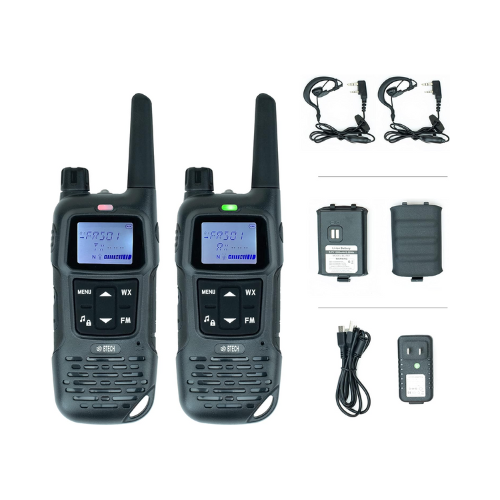
BEST FRS WALKIE TALKIE
Betch FRS-A1
Buy Now On Amazon
NOTHING FANCY: “The main reason [I like these] is simple operation,” Nass said. They also run off a USB-C charger, making them compatible with most phone chargers.
DURABILITY: The BTECHs are weather-resistant, meaning they’ll stand up better to outdoor use.
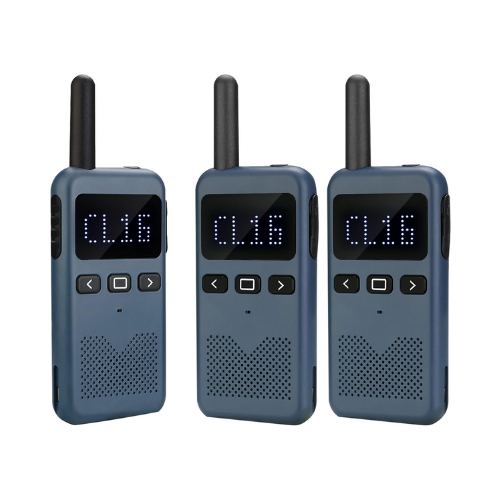
RUNNER UP
Retevis RB19
Buy Now On Amazon
STYLE POINTS: The Retevis model is small and slim, meaning it fits into a shirt pocket and looks less obtrusive on a desk.
SIMPLICITY’S SAKE: Like the BTECH, Nass said the best feature of these radios is their simplicity and easy compatibility with ubiquitous chargers. However, it’s worth noting the Retevis lacks some of the bells and whistles of the BTECH.
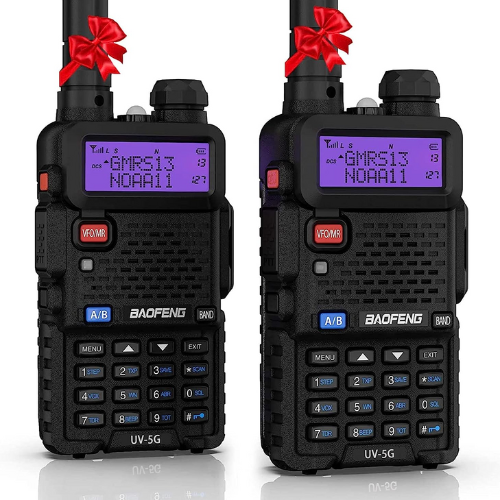
BEST BUDGET
BAOFENG UV5G
Buy Now On Amazon
SHOP SMART: Baofeng, and Chinese radio makers in general, really burst into the US market in 2015, Nass says. At first, there were some quality issues, and the radios developed a reputation for being “cheap and junky.” But by 2023, Nash says, “They’ve come a long way. The reality is for like $20… they just work.” The Baofengs, in other words, are here to stay – and for operators on a budget, that’s a good thing.
ACCESSORIZE: Depending on your use-case here, it might be a good idea to spring for the 4-count radio package that includes external microphones and cables that you can clip to your gear for ergonomic use without having to take out the radio itself. Since
Since this is a GRMS radio, you need a license to operate it.
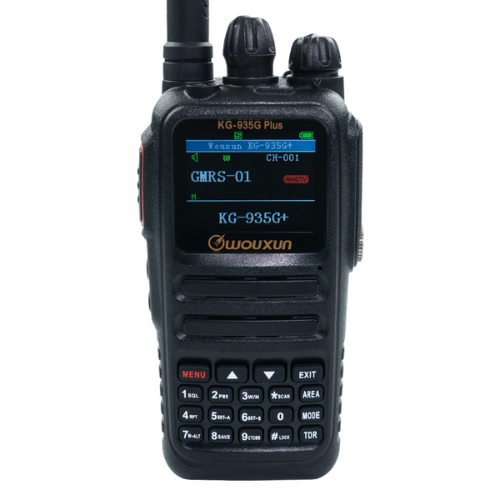
BEST OUTDOOR
Wouxun KG 935G Plus
Buy Now
TRIED AND TESTED: Nass says the Wouxun KG is “rated for outdoors,” because it has IP66 dust and water protection. That should keep it operational rain or shine.
LEARNING CURVE: The Wouxun is “easy to use,” Nass says, “But has all the features for someone that is more experienced.” This is another model of radio that requires a license.
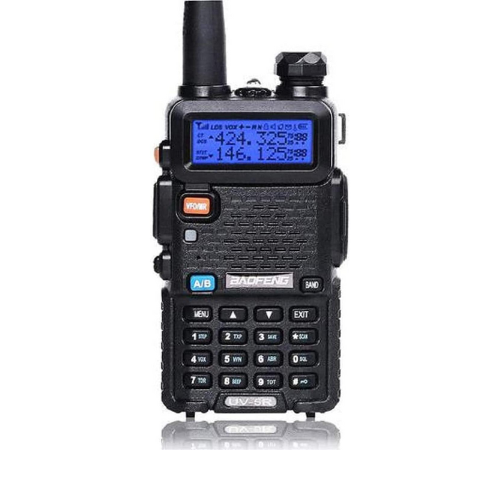
BEST FOR BEGINNERS
Baofeng UV-5R Two Way Radio
Buy Now On Amazon
STEP UP: This radio is a perfect entry point for people looking to experiment with HAM Radio – after they’ve got their license, of course. “The UV5R is a simple and cheap radio to help people get started,” Nass says.
ROI: At less that $20, this radio is an absolute steal. It also doesn’t require a license to operate, making it great for beginners.
Frequently Asked Questions About Walkie Talkies
How do walkie talkies work?
Like any radio, walkie talkies emit energy at a specific wavelength that other radios can receive. These are called radio waves, and they come in various frequencies, allowing a variety of different uses. Most users will be on a small section of the electromagnetic spectrum, sending and receiving waves in that little slice over what operators refer to as “channels,” or specific frequencies.
How do I get started in Amateur or HAM Radio?
This is a big question, but Nass has a wealth of videos on his channel, and a handy live seminar right here on all the basics.
Why use a radio when cell phones exist?
Nass gave SPY plenty of good reasons. One is practical: radio doesn’t depend on cell networks – you’re producing your own signal that other users can pick up. But the second reason is perhaps more important: “Amateur radio is really only as good as the members and the licensed users that we have in that community,” Nass said. “I want to continue to add to that community so that it continues to be a viable asset in the future, both for potential emergencies and just as a really fun hobby.”
Why do I need a license for a long-range walkie-talkie?
The more power you have available to you, the more destructive – or just annoying – you can be with it. GMRS radios allow for much more powerful communication – that goes further, and can transmit more widely – and as such are used by many users as well as business and public service officials like police and firefighters. When you’re on the FRS, you’re not going to interfere with any of that. By placing a slight barrier to entry to the GMRS spectrum, and a slightly larger one to the HAM radio spectrum, the FCC is basically making sure that the people using these channels won’t interfere with each others’ communication.
How far do GMRS radios transmit?
This is also a complex question. FRS radios, with their fixed antennas, are basically limited to a few miles at most. A 50 watt GMRS radio with an unobstructed line of sight and a good antenna can transmit 50 to 60 miles easily. Of course, terrain can interfere with this – but with GMRS you have a much better chance of being heard than the smaller FRS devices.
More Top Deals from SPY
Best of SPY
